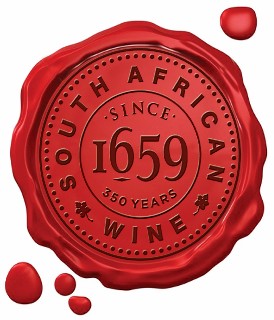2009: South Africa celebrates 350 years of winemaking!
SOUTH AFRICA:
A NEW WORLD PRODUCER WITH A 350-YEAR HISTORY
Although South Africa is counted amongst the New World’s wine producers, the first grapes were pressed for wine at the Cape, 350 years ago,in 1659 under Jan van Riebeeck. He had come to the Cape in 1652 to establish a settlement on behalf of the Dutch East India Company. Vineyards were planted more extensively a generation later, when the French Huguenots began arriving from 1688 onwards, fleeing religious persecution.
First under Dutch and then British rule, the Cape became famous for its Constantia dessert wines. By the late 18th century they were being served in Europe to the nobility and when Napoleon was exiled to St Helena, in 1815, it is said they brought him some solace. Such was their renown that Jane Austen, Charles Dickens and Baudelaire wrote about them.
By the late 19th century and early 20th century, German and Italian immigrants began settling at the Cape, introducing winegrowing and winemaking traditions of their own.For most of the 20th century, the local wine industry was controlled by the KWV or the Koöperatiewe Wijnbouwers Vereeninging Beperkt van Zuid-Afrika (Co-operative Wine Growers’ Association Limited of South Africa). Founded in 1918 to represent the interests of wine farmers and regulate the stable growth of the Cape’s wine industry, it was privatised in 1997, allowing for the deregulation of the industry.
Another impetus for freeing up the industry was South Africa’s return to international trade after decades of isolation under apartheid rule. With political reform and the advent of democracy in 1994, there was an influx of financial and intellectual capital into the wine industry.
Locally trained winemakers began travelling to other wine-producing countries, to study abroad or work in the cellars of leading winemakers in the Old and New World. Viticulturists began playing a far more prominent role and producers became keenly aware of the need to focus on noble cultivars, to use superior plant material and also to match varietal with terroir, in the process discovering and developing new winegrowing areas. They also began adopting techniques to better express specificity of site in flavour profile.
At the same time, producers began developing a conversancy with
international markets, and with the needs and demands of consumers.
A concerted effort was also made to begin benchmarking against
international wines, with world-respected palates from abroad becoming a
regular feature of local competition panels, affording a wider frame of
reference.
Even though South Africa’s presence on contemporary world markets is still in its relative infancy - spanning no more than a decade-and-a-half - the country’s wines consistently earn positive attention. They also win prestigious awards on showcases such as the International Wine & Spirit Competition and International Wine Challenge in London, Vinexpo in France, Concours Mondial de Bruxelles in Europe, Sélections Mondiales des Vins in Canada, as well as on other Organisation Internationale de la Vigne et du Vin (OIV) events.
Stylistically, South African wines occupy the middle ground between Old World and New. Structured for elegance and food-compatibility, they nevertheless express prominent varietal flavours.


